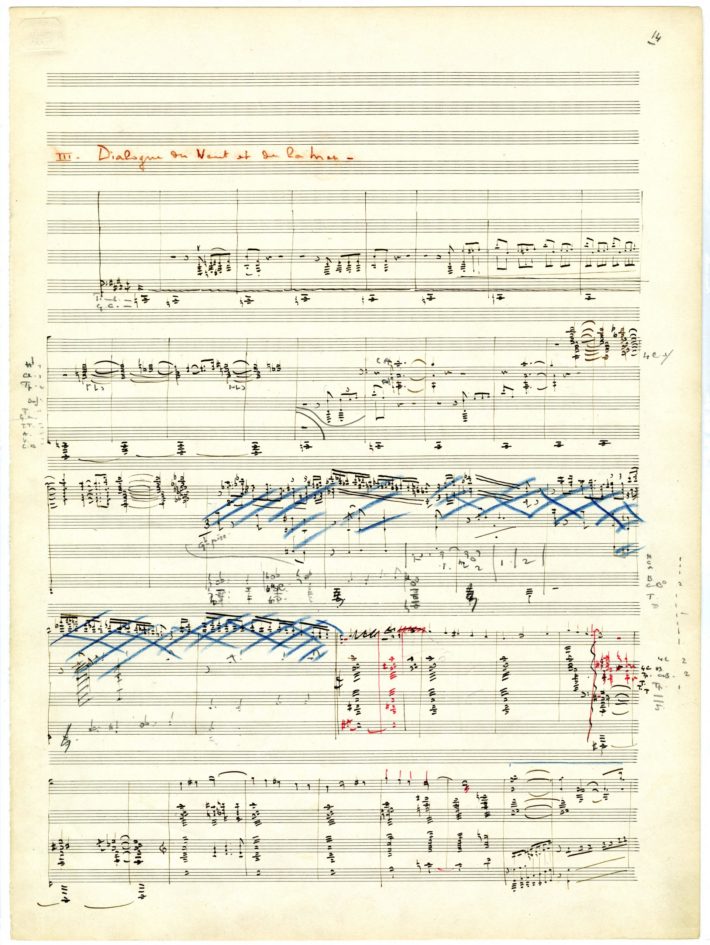The title given to the third movement, Dialogue du vent de la mer (Dialogue of the wind and the sea), differed from what Debussy had initially planned, which was to have been Le vent fait danser la mer (The wind makes the sea dance), as he had articulated by letter (September 12th, 1903) to Durand.
The blue penciling on this page represents the most visually prominent instance of self-editing within the manuscript: the voices marked out in the third and fourth scores do not appear in the published score, thereby representing an outright excision of that musical content. Further, Debussy has added copious details of orchestration by means of pencil, both in the margins and within the staves themselves.
The composer’s customary shorthand conventions are also evident. In the fourth score, Debussy has extended a passage to something longer than initially planned by filling in with red ink to create an additional measure within the passage. To indicate repetition, he has used two different devices: a bracket (here in blue) above a stave, in the last two bars of the fifth score, indicating the content that is to be repeated; and also numbers, which he does in the third score, on the third of the four stave lines, adding two bars in pencil and marking them “1” and “2” to indicate an ensuing repetition.


